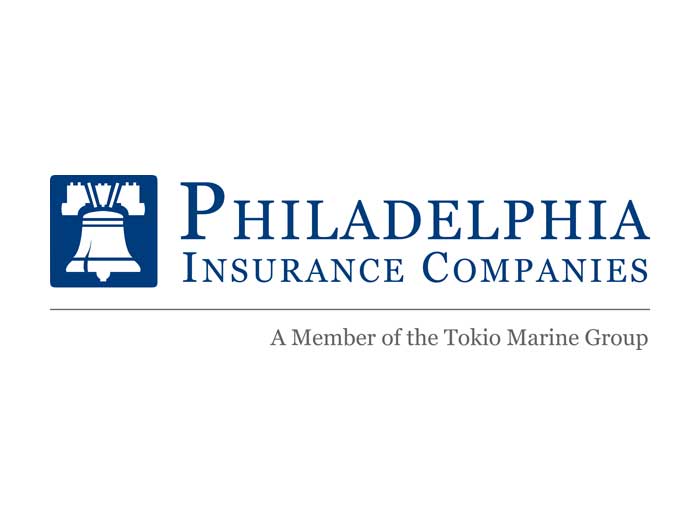Hype, Boom, Bust and Recovery: How Blockchain May Yet Prove Its Worth to Insurers
As the world economy and the insurance industry struggle to recover from the COVID-19 pandemic, associated lockdowns and constrained economic activity, blockchain technology has been in the news a lot.
From cryptocurrencies to enterprise blockchain to decentralized finance (DeFi) and nonfungible tokens (NFTs), blockchain has proved it can help with decentralized efficiency, work as a store of value through tumultuous times, and generate new methods to obtain capital returns.
While each of the varied blockchain technologies (cryptocurrencies, enterprise blockchain and so on) is at a different stage on the Gartner Hype Cycle, the insurance industry is following the movements and like many other industries, slowly looking to embrace the technologies.
The Hype Cycle is a useful tool to gauge expectations for a technology over time. Generally, technologies peak fairly early in expectations, then plummet, but eventually normalize to a plateau.
Within the insurance industry, enterprise adoption of various blockchain tools should be expected to pick up over the next decade, following the maturity of the technology along the Gartner Hype Cycle. (See “Hype Cycle for Blockchain, 2021.”)
Increasing Returns with Cryptocurrency
Born through cryptocurrency, the blockchain and broader distributed ledger technology are significant, because they remove the need for confirmation and verification by a central authority.
For example, through its underlying technology, bitcoin solved the double-spending problem, which stymied digital currencies before it. (The double-spending problem is the risk, particularly when digital currency is exchanged, that a person could concurrently send a single unit of currency to two different sources.)
It also reinvented the concept of monetary networks by providing a true peer-to-peer payment system and eliminating the need for intermediary banks, including central banks, in confirming and verifying transactions.
Perhaps even more important, bitcoin’s protocol programs the entire future of its monetary expansion from its genesis. The amount of bitcoin in circulation is programmed to expand very slowly, gradually growing increasingly scarce and capping at 21 million bitcoin in circulation by about the year 2140.
At the time of writing this article, 18.9 million bitcoin are in circulation. Bitcoin’s monetary expansion path, which grows more scarce each year, is very different from monetary expansion of fiat currencies, like the United States dollar, with which central banks rapidly expand the money supply as a policy tool during times of unease — and sometimes even during times of stability.
The rapid money-supply expansion of fiat currencies as a policy response during the last few years has even influenced pop culture, creating memes like “Money Printer Go Brrr.”
Cryptocurrency’s usefulness as a peer-to-peer exchange across borders, along with differences in money-supply expansion with fiat currencies, are leading to cryptocurrency exchange-rate appreciation against major currencies, including the USD.
Bitcoin’s rise relative to fiat over the last decade, Ether’s performance in recent years, and other opportunities for cryptocurrency investment growth have not gone unnoticed by countries, investors, and industries, including insurance.
Read More: Blockchain Vocab Every Insurance Professional Will Want to Know
While the market tear has undoubtedly cooled recently, country and enterprise adoption took off in 2021; for example, El Salvador became the first country to adopt bitcoin as a national currency.
Meanwhile, organizations like MicroStrategy, Grayscale, Tesla and ARK Invest have or continue to put money down on bitcoin.
The insurance industry is no longer sitting on the sidelines. The low-interest-rate environment has depressed insurers’ net investment yields, constraining industry-wide profitability efforts since 2020. For that reason, the industry is increasingly looking for positive-yielding investments, including investing in cryptocurrency.
Last year saw investment by Mass Mutual and Starr/Liberty Mutual through digital currency companies such as NYDIG. This sort of enterprise adoption of cryptocurrency is likely to continue.
Improving Operational Efficiency with Enterprise Blockchain
While cryptocurrency leads the pack, use of private permissioned blockchain (notably missing on Gartner’s Hype Cycle but likely represented by “Blockchain Platforms”) for intercompany data exchange and verification is moving closer to the other side of the trough of disillusionment and toward the slope of enlightenment on the Hype Cycle.
During the recent economic volatility, organizations have been focused on increasing operational efficiency, which is the special sauce of enterprise blockchain.
On that note, the use of enterprise blockchain is quite different from cryptocurrency in that the underlying protocol is generally not public (through which anyone can set up a node on the decentralized system); instead, it’s a private permissioned network.
Typically, a private permissioned blockchain network involves rules by which parties — generally only businesses— can set up a node and be involved in the network’s shared version of the truth associated with the decentralized system of data exchange. This is why it’s often referred to as enterprise blockchain.
The Institutes RiskStream Collaborative provides an excellent example here.
Developing Innovations for the Insurance Industry
The RiskStream Collaborative is the largest blockchain consortium in insurance, with more than 30 leading insurers, brokers and reinsurers as members.
It has collaborated with technical solution providers like Kaleido to create a multiplatform enterprise blockchain framework, called Canopy, and build decentralized applications (dApps) on top of Canopy that can streamline the sharing and verification of data among network participants. Blockchain applications can help facilitate operational efficiencies for many multiparty business processes within insurance.
Further, the RiskStream Collaborative leverages RiskStream Labs, a blockchain innovation hub designed to accelerate innovation efforts across various sectors, to prioritize consortium-wide resource utilization on various use cases. Within the personal auto sector, testing is underway of a First Notice of Loss (FNOL) data-sharing application, called Rapid X.
This app reduces the significant back and forth between parties to collect, reconcile, and correct FNOL data. Assuming industry-wide adoption, it could ultimately save the industry between $61 million and $172 million annually.
The application next closest to production is the Mortality Monitor, in the Life & Annuities sector. This use case enables insurer members to share verified and validated information on a policyholder who has passed away, reducing manual intervention and cycle time needed to settle a claim and enabling proactive service to the beneficiary.
Other use cases in commercial lines, such as surety bonds — power of attorney verification, are not far behind. This solution applies distributed ledger technology to advance the surety process away from ink and paper to an automated, streamlined, and digitized workflow process among the principal, obligee and surety.
This surety solution is likely to be extended. The issuance of a surety bond is not the final stage in the bonding process; a bond may need to be verified to confirm its authenticity and prevent future problems — from bond rejection to legal difficulties.
The objective of the surety bond — bond verification use case is to explore the potential for a new approach, leveraging blockchain technology to greatly reduce the time, cost, and risk to all stakeholders in the surety bond verification process around the world.
Decentralized Finance: Enabling New Financial Models
DeFi is a system by which financial products become available on a public blockchain network, such as Ethereum. Modern financial infrastructure, whether it’s banking, trading or lending, is built on a hub-and-spoke model.
This centralized approach to modern finance was very useful over the last century in allowing certain centralized parties to be at the epicenter of financial transactions, but recent financial crises have demonstrated that risks to those parties can cascade to the entire financial system. Moreover, the modern financial system requires customers to deal with a multitude of middlemen to obtain a loan or trade a stock.
Until recently, there was no way for consumers to bypass this modern system in a more peer-to-peer manner.
DeFi changes that.
It uses public blockchain technology to build DApps that disintermediate more centralized models, enabling provision of various financial services to parties within a network regardless of demographics such as age, ethnicity, and so forth.
To leverage DeFi tools (or DApps), one must simply be part of a network. Smart contracts, programmable code entered into a blockchain that can set terms and activities, provide the framework for the functioning of these DeFi apps.
In modern finance, when someone makes a transaction, it’s recorded on a private ledger — like the person’s bank transaction history, which is managed by that bank. Blockchain provides an alternative in which users are anonymous, as transactions are stored on a distributed, decentralized public ledger as computer code.
Using smart contracts on a public chain, DeFi apps allow users to lend or borrow funds from others, speculate on price movements on a range of assets using derivatives, trade cryptocurrencies, and earn interest in savings-like accounts.
Many of the DeFi apps are being built by decentralized autonomous organizations (DAOs), which offer an alternative social coordination mechanism to a traditional hierarchical structure or business.
Interestingly, through both DAOs and other organizational mechanisms, decentralized insurance (DeIn) is also starting to develop.
DeIn products can offer protection from DeFi deposits, hedge against crypto volatility risk, protect against theft, and provide coverage for smart contract risks. In some cases, DeIn can offer immediate payouts.
A few examples are Nexus Mutual, which offers smart contract coverage for potential bugs in smart contract code, and Etherisc, which offers crypto-wallet insurance products as well as coverage for collateralized crypto loans.
Tracking Asset Ownership with Nonfungible Tokens
Nonfungible tokens, or NFTs, are a hot topic, garnering attention from business periodicals to pop culture. Although they’ve been around for a handful of years, NFTs really emerged and gained notoriety in 2021, when they were increasingly being used to buy and sell digital collectibles.
NFTs are unique, blockchain-based tokens that can represent anything. The key word is unique. So unlike bitcoin, with which each token is equal to and interchangeable with another such token, NFTs represent a singular concept.
While much of the initial focus is on digital collectibles, it’s possible to tie physical objects to NFTs too, which makes them interesting for other insurance use cases.
The scarce aspect of NFTs stands in stark contrast to most digital creations, which are almost infinite in supply. NFTs also allow for built-in authentication, which can serve as proof of ownership. Whether an NFT application may be digital collectibles, translation of a physical object to a digital twin with NFT backing, or other use cases, NFTs certainly have insurance implications.
Today, NFTs focus on digital art and collectibles, games, memes, social media, sports collectibles, music, and web domains. There are angles for insuring these digital collectibles, leveraging NFTs for insurance-related marketing, and considering the application of NFTs to software licensing.
In addition, initiatives are underway, such as Veracity Protocol, in which computer-vision digital twins are used to create NFTs of physical products. For example, the RiskStream Collaborative has discussed the potential for high-value physical collectibles, like art, to be created as an NFT to demonstrate authenticity of ownership and reduce or eliminate the possibility of fraud.
Finally, there’s potential for enterprise use of NFTs for tracking assets or binding documents for verification. We’ve even started to see real estate transactions with a blockchain, through an organization named Propy.
Keeping up with Blockchain
The risk management and insurance industry is changing, and blockchain technology will continue to be at the forefront of that change over the next decade. While blockchain-enabled decentralization is underway across a variety of economic areas, strong centralized institutions will remain important in providing services to this new, evolving economy.
Those that move first to adapt will have an advantage.
Over the next five to 10 years, the insurance industry will continue to be faced with an increasingly fast-moving, innovative, and data-driven environment, and blockchain technology will likely result in large-scale changes to traditional investments (through cryptocurrency and DeFi) and operations (through enterprise blockchain and NFTs).
As this progresses, more risks will emerge, and the industry will undoubtedly adapt.
This foundation of this innovative future is already being established — you need only look at the Gartner Hype Cycle to see it. &











